I am looking at the SPIN software. I would like to do use it to find models of LTL theories. All the manuals and tutorials talk about verifying properties of algorithms, but I am not interested in that at all. I simply want to find a models of LTL formulas (a corresponding Büchi automaton, I suppose), much like the mace4 or paradox model checkers can find models of FOL formulas. I believe that SPIN should be able to do that, but I am unable to find how in the documentation. Could somebody point to any helpful resources?
Asked
Active
Viewed 859 times
2
-
1I am not sure I understand your question. But if you want to generate a Buchi automaton from an ltl formula you can use [this](http://www.lsv.fr/~gastin/ltl2ba/index.php) – Patrick Trentin Aug 02 '17 at 11:02
-
Thanks, this is very much what I was looking for. – user1747134 Aug 02 '17 at 12:12
-
1This [question/answer](https://stackoverflow.com/questions/38780330/how-to-transform-ltl-into-automato-in-promela-spin) might be somewhat related to your needs too. – Patrick Trentin Aug 02 '17 at 12:16
1 Answers
2
In order to generate a Buchi automaton from an LTL formula you can use the ltl2ba tool. The tool can provide a graphical representation of the Buchi automaton or a Promela code version of it, as in the following example:
~$ ./ltl2ba -f "([] q0) && (<> ! q0)"
never { /* ([] q0) && (<> ! q0) */
T0_init:
false;
}
You may also use Spin to generate the Promela version of the Buchi Automaton, with the command:
~$ spin -f "LTL_FORMULA"
e.g.:
~$ spin -f "[] (q1 -> ! q0)"
never { /* [] (q1 -> ! q0) */
accept_init:
T0_init:
do
:: (((! ((q0))) || (! ((q1))))) -> goto T0_init
od;
}
However, in contrast with ltl2ba, Spin does not seem to simplify the Buchi Automaton when generating the source code, making sometimes difficult to interpret its output; e.g. try running spin -f "([] q0) && (<> ! q0)" and compare the output automaton to that obtained with ltl2ba.
EDIT
You can now use gltl2ba in sostitution for ltl2ba's website, e.g.:
~$ gltl2ba.py -f "([] p0) || (<> p1)" -g
never { /* ([] p0) || (<> p1) */
T0_init:
if
:: (1) -> goto T0_S1
:: (p1) -> goto accept_all
:: (p0) -> goto accept_S2
fi;
T0_S1:
if
:: (1) -> goto T0_S1
:: (p1) -> goto accept_all
fi;
accept_S2:
if
:: (p0) -> goto accept_S2
fi;
accept_all:
skip
}
generates the following graph:
Patrick Trentin
- 7,126
- 3
- 23
- 40
-
1Thanks. Is there an easy way to convert the output to a DOT/PNG graph as in the online tool? Can the output of `ltl2ba -d` be changed to DOT somehow? – user1747134 Aug 03 '17 at 11:13
-
@user1747134 the easiest and most reliable way for doing this, in my opinion, is to to write a simple parser/script for the *Promela* code that is generated. The output obtained with `-d` does not seem to be complete, e.g. it does not explicitly state whether the *init* state is accepting or not. – Patrick Trentin Aug 03 '17 at 11:33
